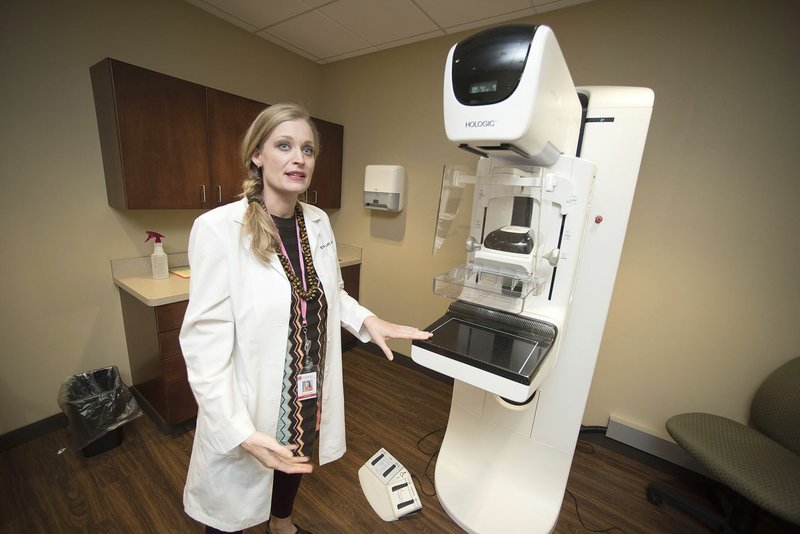FAYETTEVILLE -- A new state law requiring insurance companies to cover ultrasound and 3-D mammogram screenings will save more lives, medical experts say.
"This test has been proven in many, many studies to be a superior mammogram," said Dr. Kelly Pierce at The Breast Center.
Mammography is the most widely used cancer screening tool for women between the ages of 40 and 74, according to the National Cancer Institute, a federal agency for cancer research and training.
Arkansas is taking a health-care step forward by requiring insurance to cover the more-advanced screenings as part of regular checkups, said Rep. Greg Leding, D-Fayetteville. Leding sponsored the legislation that took effect Aug. 1.
Act 708 says an insurer cannot impose a co-payment or a deductible for ultrasound and mammogram screenings. The law does not require coverage for more than one mammogram if a patient has to have additional tests.
The 3-D mammogram, also called tomosynthesis screenings, uses multiple X-ray images taken in an arc around the breast while conventional mammograms use a two-dimensional image. Ultrasound uses harmless, high-frequency sound waves to produce an image.
A 2014 study by the Journal of the American Medical Association found screenings that use digital and 3-D mammography detected 41 percent more invasive cancers and reduced false positive findings by 14 percent. However, the National Cancer Institute's website shows those findings are not yet conclusive.
The U.S. Food and Drug Administration approved the 3-D mammogram, but it is not considered standard care, according to breastcancer.org, a nonprofit organization that seeks to provide up-to-date information on breast cancer.
Not everyone agrees 3-D mammograms or ultrasound screenings are the best way to go. Supplemental ultrasound screening for women with dense breasts would substantially increase costs with little improvement in overall lifespans, according to a 2014 report from the Annals of Internal Medicine.
Leding said insurance premiums are not expected to rise because of the law. Insurance companies may save money because of lower treatment costs by catching the disease early, he said.
A QualChoice spokesman said Friday the company couldn't immediately answer questions about the change. An Arkansas BlueCross BlueShield spokeswoman did not return a phone message or email Friday afternoon.
Patients should save money, Leding said. A 3-D mammogram cost $400, and an ultrasound costs $275 at the The Breast Center, Pierce said. Some patients were paying those costs out of pocket before the legislation took effect, she said.
While 3-D mammograms are not yet offered at all clinics in Northwest Arkansas, the technology has proven extremely effective locally, said Lisa Nims, the radiologic technologist mammography supervisor at the Northwest Breast Imaging Center at Willow Creek in Springdale.
"We can look through the whole breast. (3-D) is like having a book, and we get to see each layer," Nims said.
The Willow Creek center gives about 40 mammograms a day and has offered 3-D mammograms since 2012. The clinic was not able to provide how many of those mammograms were 3-D by deadline Friday.
The Breast Center did about 20,000 mammograms last year. The 3-D mammogram has been offered for about a year and represents about 40 percent of those mammograms, Pierce said. The center plans to switch to 3-D mammograms for all its patients, Pierce said.
The technology helps speed up treatment for patients through better and earlier diagnosis, Nims and Pierce said. In 2014, Arkansas was among 11 states with the highest cancer death rates among women, according to a study by the federal Division of Cancer Prevention and Control.
Leding said he hopes the new law will change that trend by giving more women access to the best technology, Leding said. The breast cancer death rate in women in Arkansas is 23 per 100,000, according to the Centers for Disease Control and Prevention.
"Hopefully, more women will get these screenings early," he said. "The earlier you catch cancer, the better the odds are of beating it."
NW News on 08/14/2017

